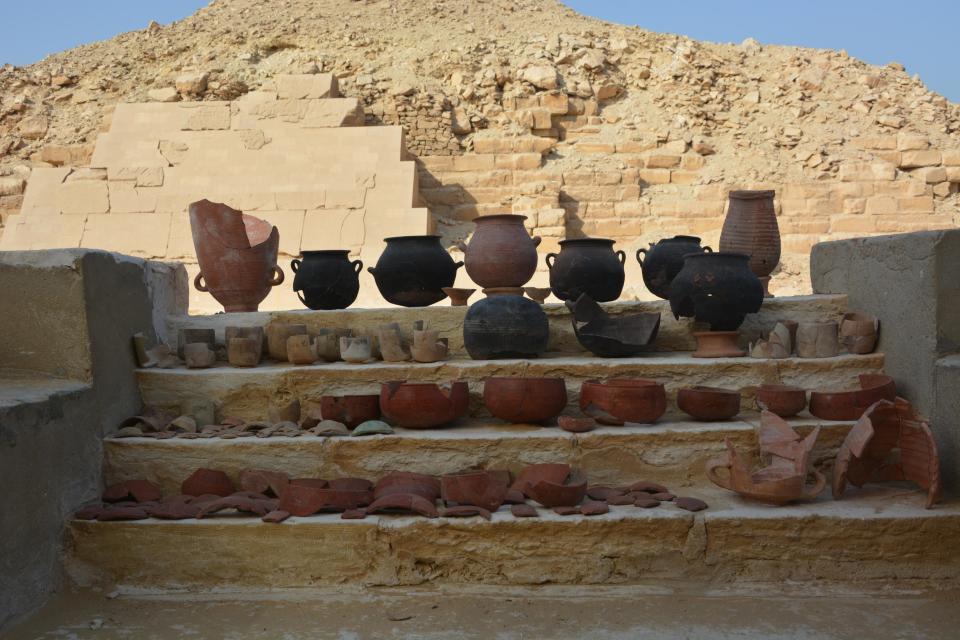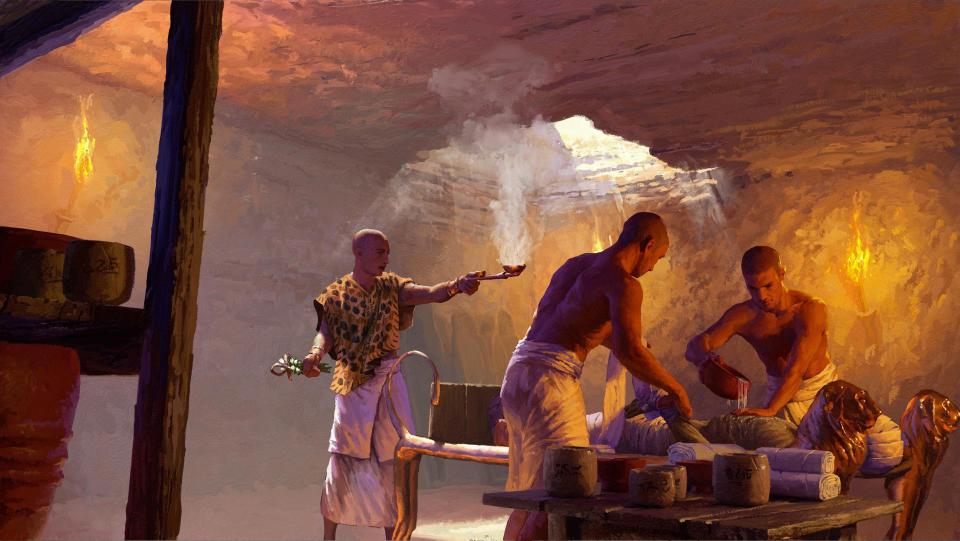Ancient Egyptian embalming fluids — researchers decipher the recipe to preserve mummies
Wrapped up in the study of mummies, Egyptologists have been mystified about how pharaohs and other revered dead were embalmed so well.
Some recent research, published Wednesday in the journal Nature, offers some revelations about the substances used by Egyptian morticians more than 2,600 years ago in the 7th and 6th century B.C.
Researchers analyzed chemical residues from 31 ceramic vessels excavated from an embalming workshop near the pyramid of Unas at the Saqqara site, southwest of Cairo. The vessels had inscriptions labeling the substance and its usage such as, "to put on his head" or "bandage or embalm with it," the researchers said.
"We have known the names of many of these embalming ingredients since ancient Egyptian writings were deciphered,” said excavation leader Susanne Beck of the University of Tübingen, Germany, in a press release describing the research. “But until now, we could only guess at what substances were behind each name.”
Ancient Egypt: Gold-covered mummy and 4,000-year-old burial plot among latest Egyptian discoveries
Resurrecting species: Scientists want to bring back the dodo – centuries after the bird famously went extinct

Analyzing ancient embalming fluids yields surprises
Some surprises awaited in the chemical analysis. The substance labeled as "antiu" by ancient Egyptians has been translated previously as myrrh or frankincense, said Maxime Rageot, an archeologist at the University of Tübingen who oversaw the analysis. But gas chromatography-mass spectrometry analysis revealed the substance as a blend of cedar oil, juniper/cypress oil and animal fats, he said.
"We could shed light on the recipe and … how they were produced and that for me was something fascinating," Rageot said in a video briefing the research team gave to journalists.

Other substances identified were used to embalm certain parts of the body, researchers said. Pistachio resin and castor oil, for example, were used only for the head.
While some of the substances – including the tar-like material bitumen – were acquired regionally, “the bulk of the substances used for embalming were not from Egypt itself," said Philipp Stockhammer, an archaeologist at the Ludwig Maximilian University in Munich.
Many were imported from the Mediterranean region, but the resin of the elemi tree would have come from tropical Africa or Southeast Asia, he said. And dammar gum comes from trees still only found in tropical Southeast Asia, Stockhammer said.
Egyptian embalming drove trade
That these substances are found in Egypt at this time in history suggests an already-established international trading network stretching from Indonesia to India through the Middle East, Mesopotamia to Egypt and to Africa, he said. "That was already established and Egyptian embalming that requested more and more of these kinds of resins really instigated the intensification of this exchange," Stockhammer said.

Research will continue on the substances and their viability because modern-day pharmacology could benefit from these ancient mixtures' antiviral and antifungal properties, said Mahmoud Bahgat, with the National Research Center in Cairo, Egypt.
"We spend billions of dollars to try to find alternative antibiotics," he said. "At the end of the day you might come up with completely different applications that might have implications on other biomedical research. That is to me the very fascinating outcomes that we need to follow."
Follow Mike Snider on Twitter: @mikesnider.
What's everyone talking about?: Sign up for our trending newsletter to get the latest news of the day
This article originally appeared on USA TODAY: Egypt research uncovers embalming fluid recipes to preserve mummies

